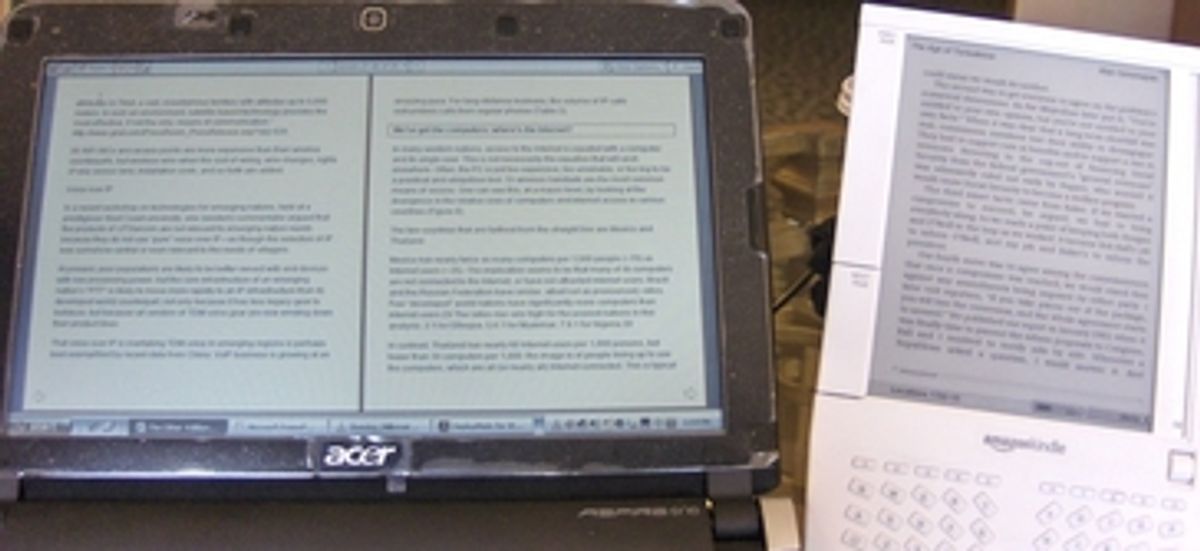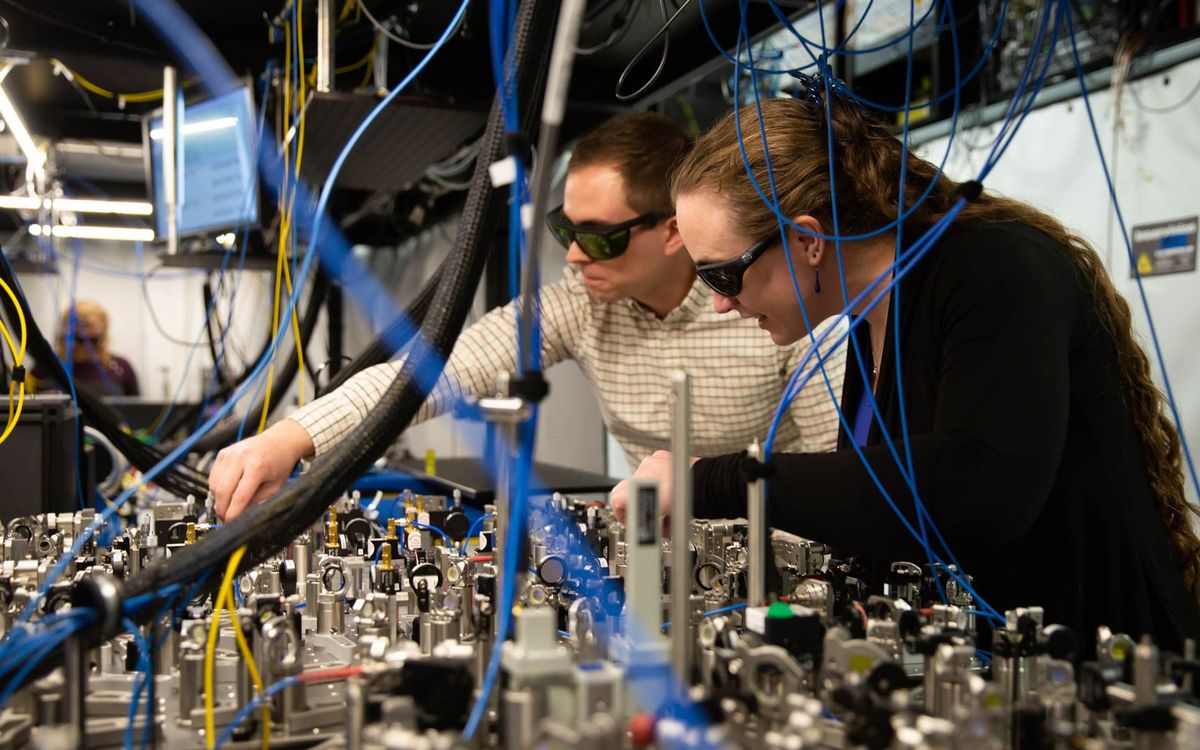But that wasn’t the fault of Jepsen’s screen. The screen, reviewers agreed, was revolutionary. Oh, sure, it could have been bigger, the resolution in color mode could have been better, but its low power consumption, visibility in bright light, and dual color and black and white modes were standouts.
Jepsen has a for-profit company now, Pixel Qi, a fabless designer of screens that just completed its first round of funding in March. Pixel Qi has announced that its low-cost low-power screen technology will be shipping this fall as part of e-book readers and netbooks, a sort of e-paper capable of video as well as static images. This generation of the technology will be bigger—10-inches, compared with the OLPC’s 7.5-inch screen—and better. Meanwhile, the company says it is working on a version capable of HDTV resolution.
I can’t wait to see it.
Photo: Pixel Qi (left) vs. Kindle
Credit: Pixel Qi
Tekla S. Perry is a senior editor at IEEE Spectrum. Based in Palo Alto, Calif., she's been covering the people, companies, and technology that make Silicon Valley a special place for more than 40 years. An IEEE member, she holds a bachelor's degree in journalism from Michigan State University.




